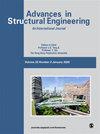舱外航天服微环境和生命支持性能的联合建模和动态分析
IF 2
4区 工程技术
引用次数: 0
摘要
维持舱外航天服微环境和生命支持系统的能力是决定舱外活动(EVA)持续时间的一个重要因素。本文介绍了人体-太空服微环境联合动态模型。论文提出了新的简化人体模型,并分析了消耗性物质。这些模型可以合理预测宇航服的安全性能,正确应对载荷的变化,并有助于优化舱外活动的强度。根据模拟结果,在设计的工作条件下,8 小时 EVA 大约消耗 1 千克 LiOH 和 2.7 千克水。液体冷却系统是微环境中的主要热管理设备。活动强度和液体冷却系统流速是影响宇航服微环境和生命支持材料消耗的两个重要因素。活动强度对 LiOH 的消耗量有很大影响,代谢热量每增加三倍,LiOH 的消耗量就会增加约 2.5 倍。活动强度对宇航服的生命支持性能起着重要作用,合理安排活动对 EVA 的效率和安全至关重要。材料消耗模型可以在任务调度阶段估算材料消耗,从而使生命支持系统高效可靠地运行。本文章由计算机程序翻译,如有差异,请以英文原文为准。
Joint modeling and dynamic analysis of the microenvironment and life support performance of extravehicular spacesuits
The ability to maintain the microenvironment and life-support systems of an extravehicular spacesuit is an important factor in determining the duration of extravehicular activity (EVA). This paper introduces a joint human-spacesuit microenvironment dynamic model. The paper presents novel simplified human body models and analyzes expendable substances. These models can reasonably predict spacesuit safety performance, correctly respond to changes in loads, and aid in the optimization of the intensity of EVAs. According to the simulations, an 8-h EVA consumes approximately 1 kg of LiOH and 2.7 kg of water under the designed working conditions. Liquid cooling systems are the primary thermal management devices in microenvironments. Activity intensity and liquid cooling system flow rate are two important factors that influence the spacesuit microenvironment and life support material consumption. Activity intensity has a significant impact on LiOH consumption, with a threefold increase in metabolic heat increases LiOH consumption by about 2.5 times. Activity intensity plays an important role in the life-support performance of a spacesuit, and proper scheduling is critical to the efficiency and safety of EVAs. The material consumption model can estimate material consumption during the mission scheduling phase, resulting in efficient and dependable operation of the life support system.
求助全文
通过发布文献求助,成功后即可免费获取论文全文。
去求助
来源期刊

Advances in Mechanical Engineering
Engineering-Mechanical Engineering
自引率
4.80%
发文量
353
期刊介绍:
Advances in Mechanical Engineering (AIME) is a JCR Ranked, peer-reviewed, open access journal which publishes a wide range of original research and review articles. The journal Editorial Board welcomes manuscripts in both fundamental and applied research areas, and encourages submissions which contribute novel and innovative insights to the field of mechanical engineering
 求助内容:
求助内容: 应助结果提醒方式:
应助结果提醒方式:


